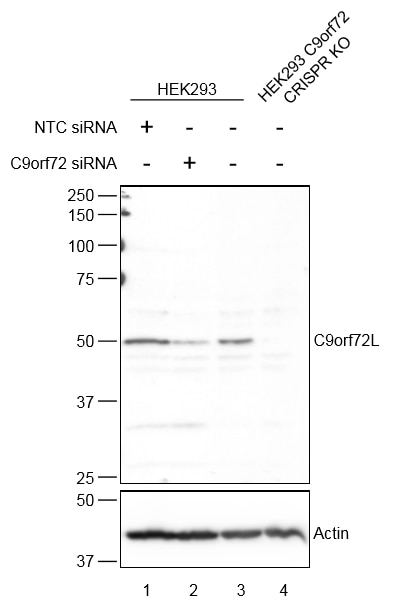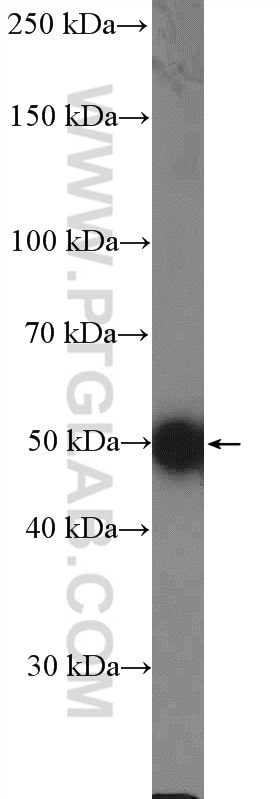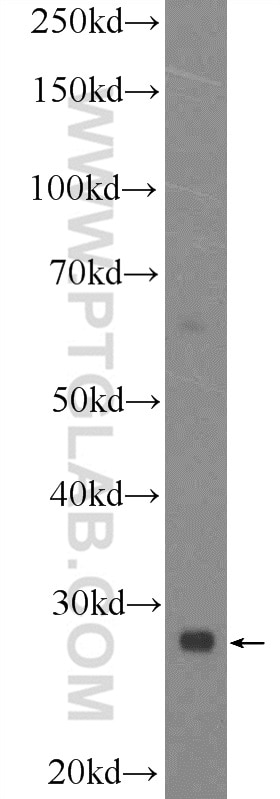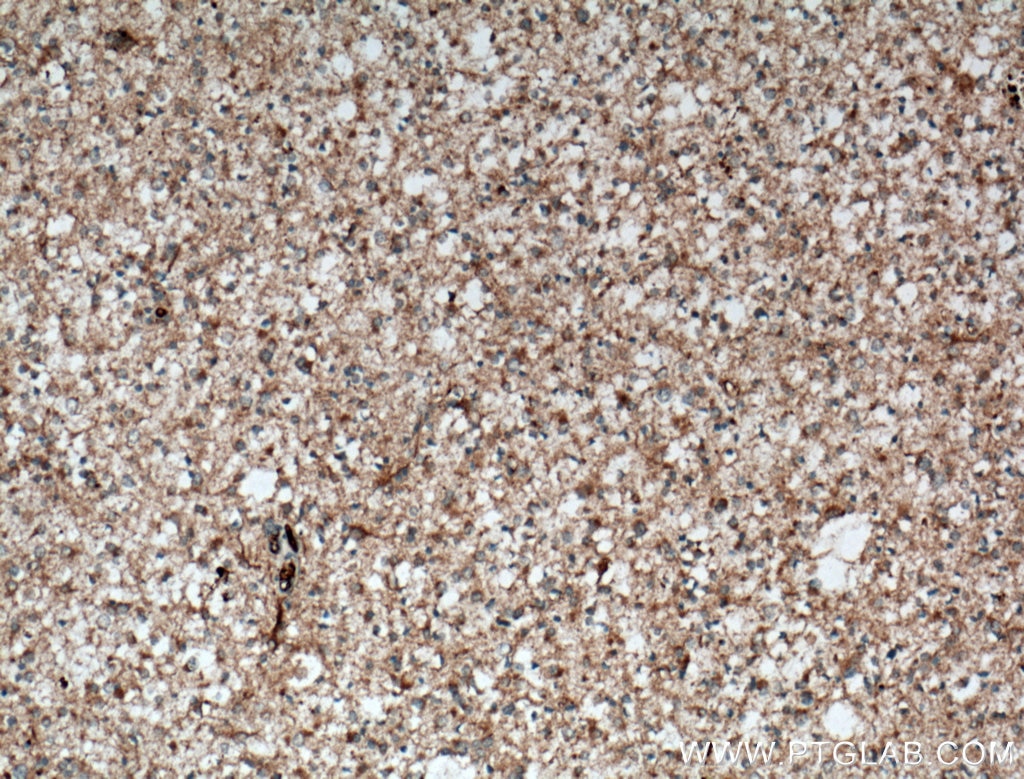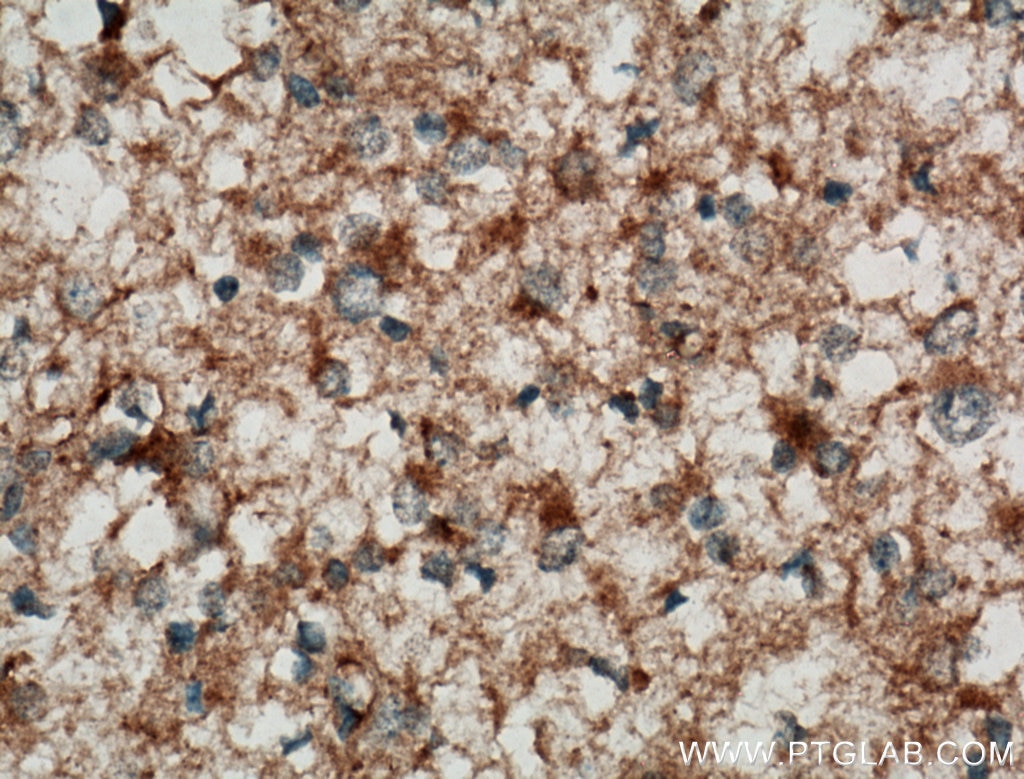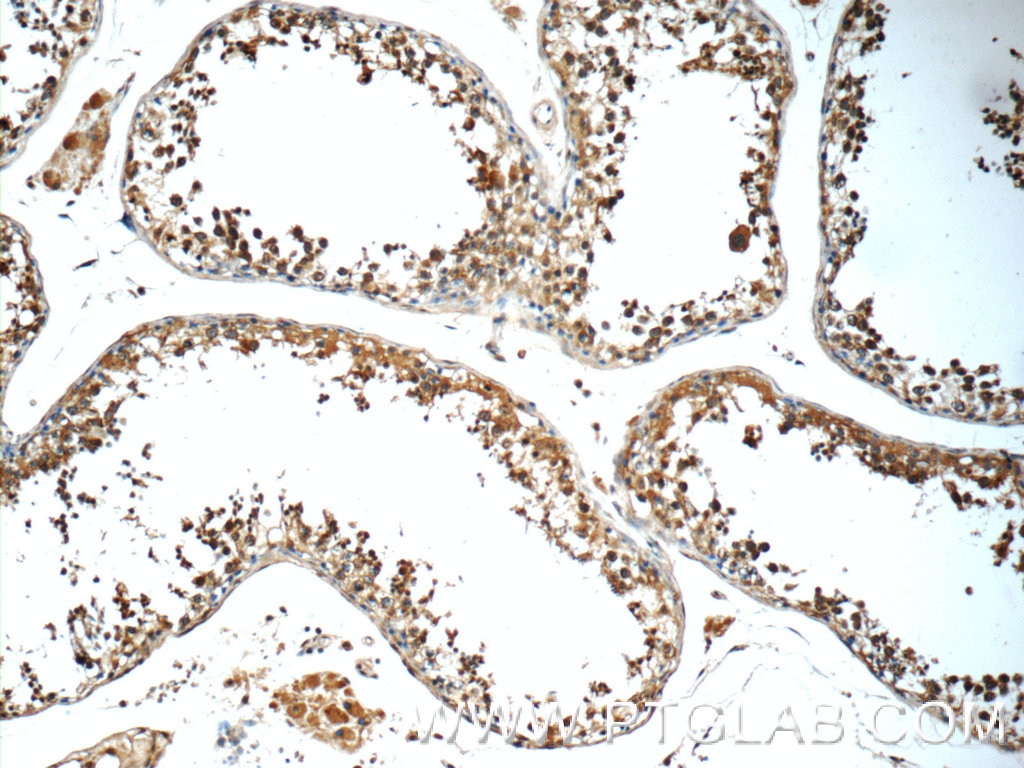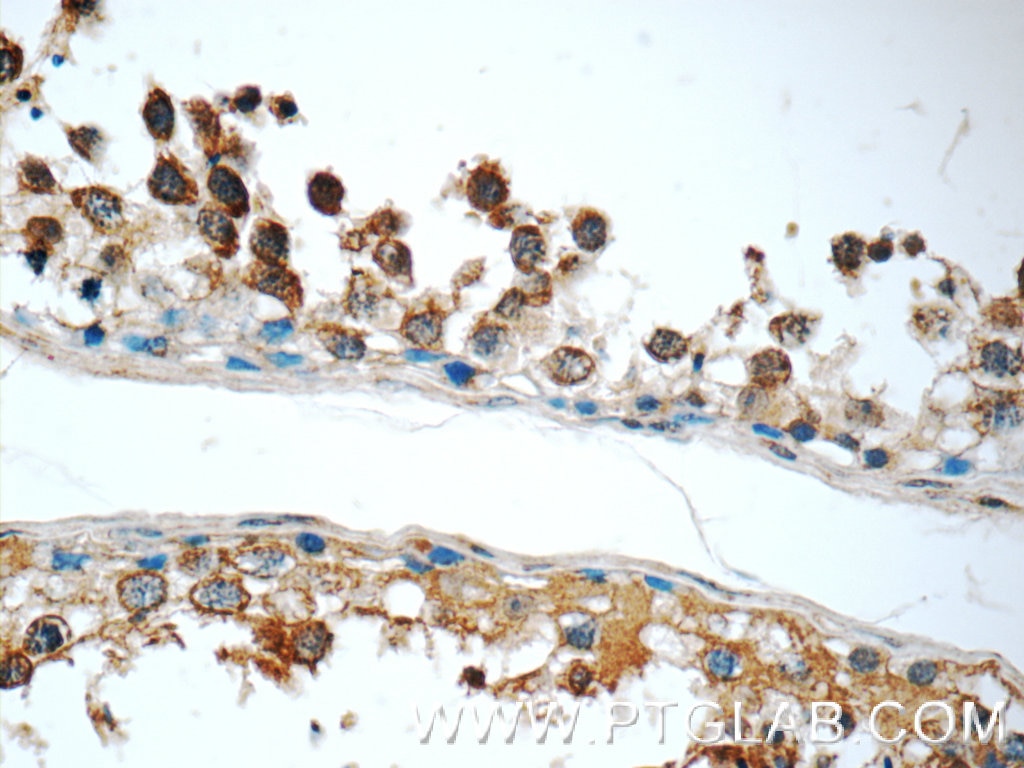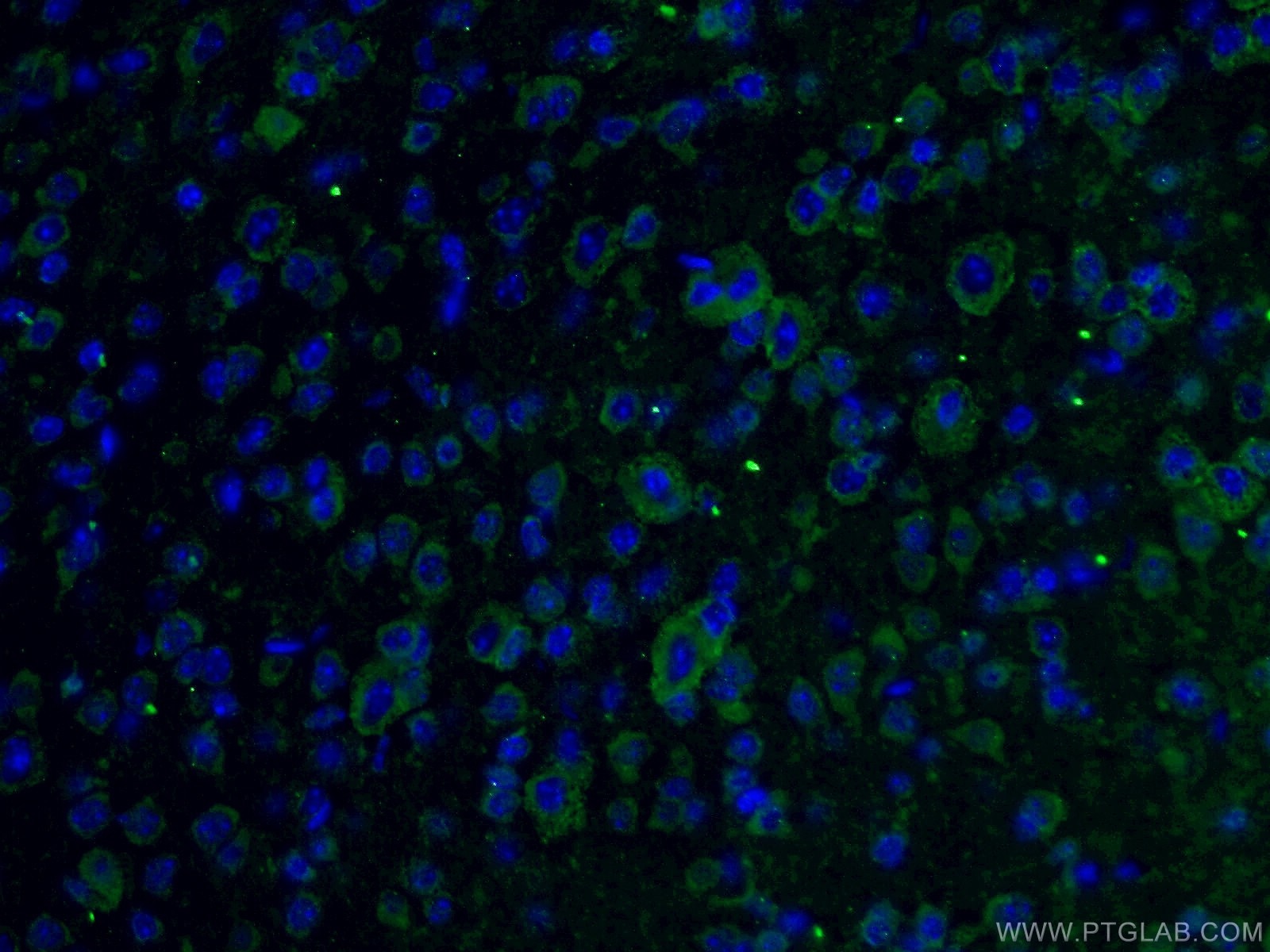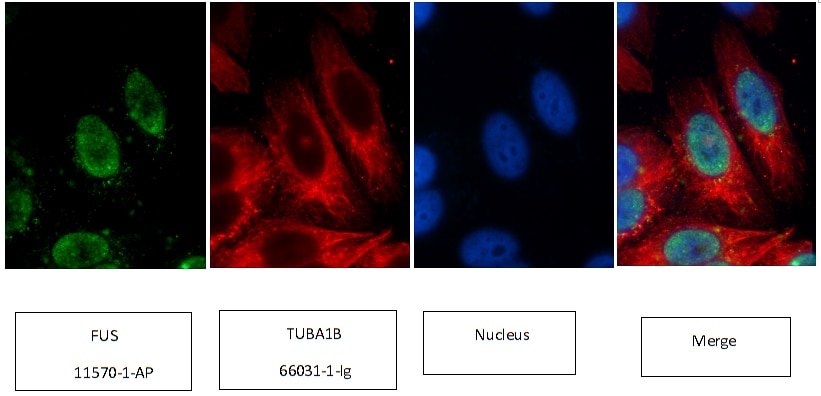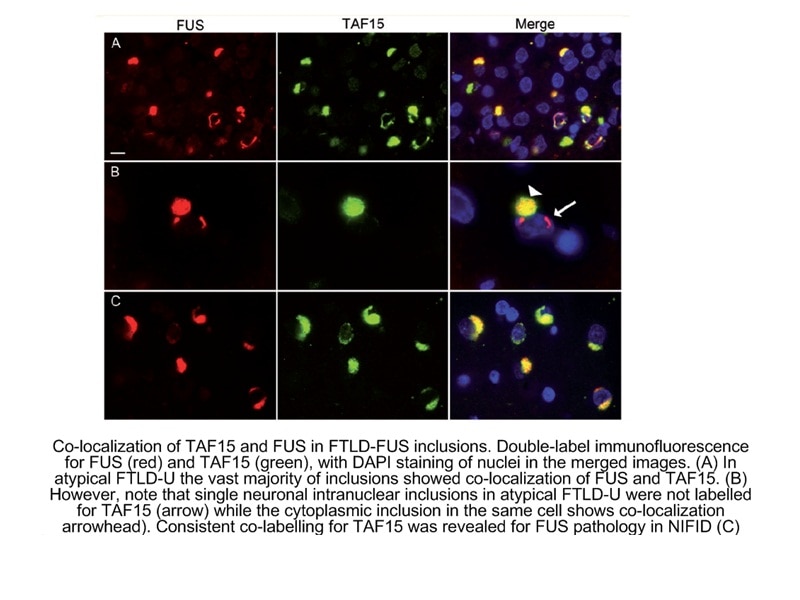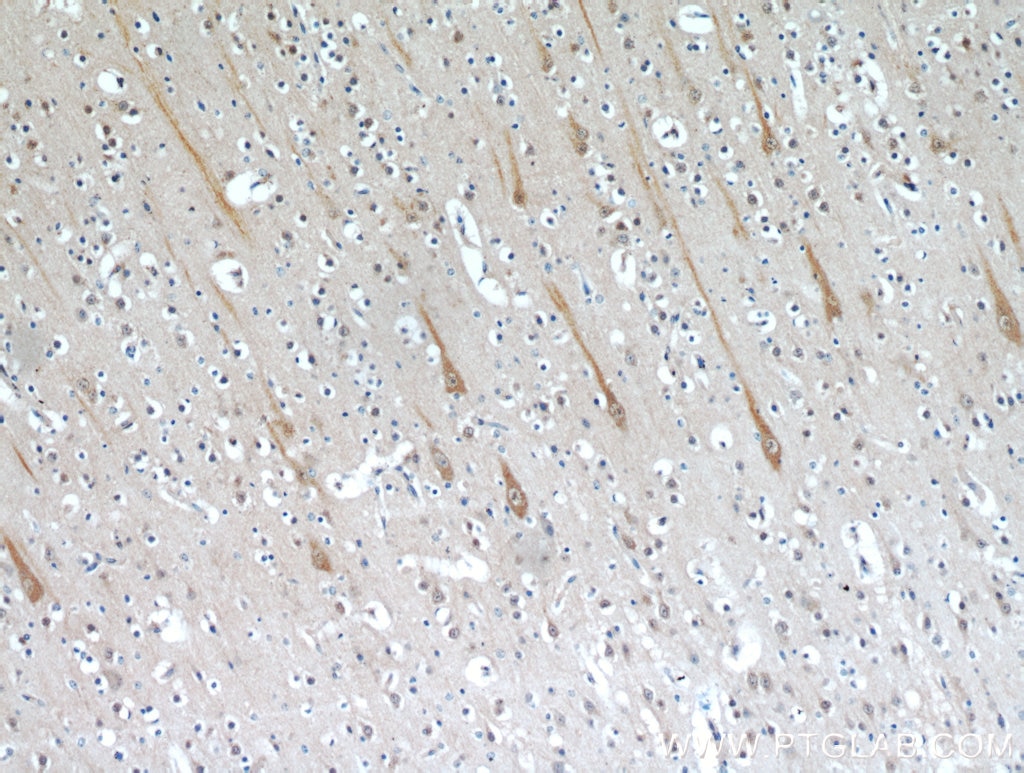- Phare
- Validé par KD/KO
Anticorps Polyclonal de lapin anti-C9orf72
C9orf72 Polyclonal Antibody for IF, IHC, WB,ELISA
Hôte / Isotype
Lapin / IgG
Réactivité testée
Humain, souris et plus (1)
Applications
WB, IHC, IF, ELISA
Conjugaison
Non conjugué
N° de cat : 25757-1-AP
Synonymes
Galerie de données de validation
Applications testées
| Résultats positifs en WB | tissu cérébral de souris, cellules HEK-293, cellules SH-SY5Y |
| Résultats positifs en IHC | tissu de gliome humain, tissu testiculaire humain il est suggéré de démasquer l'antigène avec un tampon de TE buffer pH 9.0; (*) À défaut, 'le démasquage de l'antigène peut être 'effectué avec un tampon citrate pH 6,0. |
| Résultats positifs en IF | tissu cérébral de souris |
Dilution recommandée
| Application | Dilution |
|---|---|
| Western Blot (WB) | WB : 1:300-1:1500 |
| Immunohistochimie (IHC) | IHC : 1:500-1:2000 |
| Immunofluorescence (IF) | IF : 1:50-1:500 |
| It is recommended that this reagent should be titrated in each testing system to obtain optimal results. | |
| Sample-dependent, check data in validation data gallery | |
Applications publiées
| KD/KO | See 1 publications below |
| WB | See 5 publications below |
| IHC | See 1 publications below |
| IF | See 2 publications below |
Informations sur le produit
25757-1-AP cible C9orf72 dans les applications de WB, IHC, IF, ELISA et montre une réactivité avec des échantillons Humain, souris
| Réactivité | Humain, souris |
| Réactivité citée | rat, Humain |
| Hôte / Isotype | Lapin / IgG |
| Clonalité | Polyclonal |
| Type | Anticorps |
| Immunogène | C9orf72 Protéine recombinante Ag22723 |
| Nom complet | chromosome 9 open reading frame 72 |
| Masse moléculaire calculée | 481 aa, 54 kDa |
| Poids moléculaire observé | 25-30 kDa |
| Numéro d’acquisition GenBank | BC068445 |
| Symbole du gène | C9orf72 |
| Identification du gène (NCBI) | 203228 |
| Conjugaison | Non conjugué |
| Forme | Liquide |
| Méthode de purification | Purification par affinité contre l'antigène |
| Tampon de stockage | PBS avec azoture de sodium à 0,02 % et glycérol à 50 % pH 7,3 |
| Conditions de stockage | Stocker à -20°C. Stable pendant un an après l'expédition. L'aliquotage n'est pas nécessaire pour le stockage à -20oC Les 20ul contiennent 0,1% de BSA. |
Informations générales
C9ORF72 has a domain whith polymorphic hexanucleotide repeat (GGGGCC). The C9ORF72-hexanucleotide repeat expansions have been recently identified as genetic markers in amyotrophic lateral sclerosis (ALS) and frontotemporal lobar degeneration (FTLD). The C9ORF72 repeat expansions may indicate a worse prognosis in ALS. Human C9ORF72 has some isoforms with MW 54-60 kDa and 25-30 kDa. Mouse C9orf72 has some isoforms with MW 50-60 kDa and 35 kDa. This antibody detects the N-terminal of C9orf72.
Protocole
| Product Specific Protocols | |
|---|---|
| WB protocol for C9orf72 antibody 25757-1-AP | Download protocol |
| IHC protocol for C9orf72 antibody 25757-1-AP | Download protocol |
| IF protocol for C9orf72 antibody 25757-1-AP | Download protocol |
| Standard Protocols | |
|---|---|
| Click here to view our Standard Protocols |
Publications
| Species | Application | Title |
|---|---|---|
Nat Med Haploinsufficiency leads to neurodegeneration in C9ORF72 ALS/FTD human induced motor neurons. | ||
Acta Neuropathol An interaction between synapsin and C9orf72 regulates excitatory synapses and is impaired in ALS/FTD. | ||
Elife Implementation of an antibody characterization procedure and application to the major ALS/FTD disease gene C9ORF72. | ||
Theranostics C9orf72 regulates the unfolded protein response and stress granule formation by interacting with eIF2α | ||
Front Cell Neurosci Loss of TMEM106B exacerbates C9ALS/FTD DPR pathology by disrupting autophagosome maturation | ||
EMBO Rep C9orf72 protein quality control by UBR5-mediated heterotypic ubiquitin chains
|
